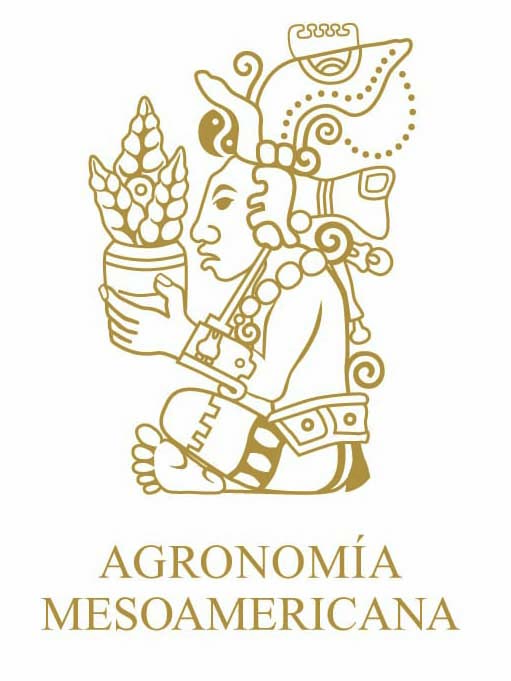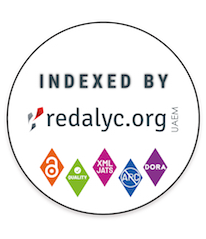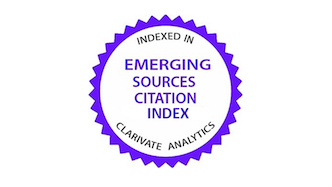Effect of vermicompost on Gros Michel banana (Musa AAA) development in greenhouse
DOI:
https://doi.org/10.15517/am.2025.59864Keywords:
worm composting, substrate, in vitro plants, acclimatizationAbstract
Introduction. From its initial stage, banana cultivation requires high-quality inputs for development and growth. The use of high-quality substrates, such as vermicompost, not only prevents the spread of soil diseases, but also promotes better development, which could help reduce production costs. Objective. To evaluate the effect of vermicompost on the growth and development of banana plants cv. Gros Michel (Musa AAA) in nursery stage. Materials and methods. At the Atlantic Campus of the Universidad de Costa Rica, located in Turrialba, Costa Rica, between July and September 2022, substrates were prepared with two types of vermicompost (anticipated [A] and delayed [P]) in doses of 0 %, 10 %, 25 % and 30 %. In vitro plants of Gros Michel banana (Musa AAA) in IV phase were then planted. Plant height, leaf area, number of leaves, leaf emission and pseudostem diameter were evaluated every two weeks. Corm diameter, fresh and dry biomass were analyzed at the beginning and end of the trial. Results. Vermicompost was beneficial at the lowest dose tested (10 % A and 10 % P). In the absence of vermicompost (0 %), plants showed the lowest development, while at the highest doses (30 % P), a phytotoxic effect was observed. Conclusion. Vermicompost stimulated banana plant growth based on the physiological variables evaluated compared to the treatment without vermicompost.
Downloads
References
Álvarez González, O. (2016). Biodiversidad genética de endobacterias asociadas a la lombriz de tierra Eisenia foetida [Tesis de licenciatura, Instituto Tecnológico de Tuxtla Gutiérrez]. Repositorio DSpace. http://repositoriodigital.tuxtla.tecnm.mx/xmlui/handle/123456789/886
Arriola Vielman, J. J. (2019). Efecto que produce la implementación de lixiviados orgánicos en el programa de fertilización química, para la aclimatación de meristemos de banano (MUSSA SPP), diagnóstico y servicios realizados en finca bananera, Los Amates, Izabal, Guatemala, C.A. [Tesis de licenciatura, Universidad de San Carlos de Guatemala]. Repositorio del Sistema Bibliotecario Universidad de San Carlos de Guatemala. http://www.repositorio.usac.edu.gt/id/eprint/12123
Awad-Allah, S. F. A, & Khalil, M. S. (2019). Effects of vermicompost, vermicompost tea and a bacterial bioagent against Meloidogyne incognita on banana in Egypt. Pakistan Journal of Nematology, 37(1), 25–33. https://www.pjn.com.pk/pjn/papers/1547105273.pdf
Blouin, M., Barrere, J., Meyer, N., Lartigue, S., Barot, S., & Mathieu, J. (2019). Vermicompost significantly affects plant growth. A meta-analysis. Agronomy for Sustainable Development, 39, Article 34. https://doi.org/10.1007/s13593-019-0579-x
Cervantes Alava, A. R., Sánchez-Urdaneta, A. B., & Colmenares de Ortega, C. B. (2019). Efecto de las aplicaciones de fungicidas comerciales sobre el contenido de clorofila en el cultivo de banano (Musa AAA). Revista Científica Agroecosistemas, 7(3), 45–49. https://aes.ucf.edu.cu/index.php/aes/article/view/315
Corporación Bananera Nacional. (2020). 22.000 empleos de la industria bananera corren peligro si Asamblea Legislativa no aprueba el AACUE a tiempo. https://www.corbana.co.cr/22-000-empleos-de-la-industria-bananera-corren-peligro-si-asamblea-legislativa-no-aprueba-el-aacue-a-tiempo/
Di Rienzo, J. A., Casanoves, F., Balzarini, M. G., Gonzalez, L., Tablada, M., & Robledo, C. W. (2020). InfoStat versión 2020. Universidad Nacional de Córdoba.
Domingues Lima, J., Mesczezen Drominiski, A., Da Silva Rocha, C., Passos da Conceição, M., Nardini Gomes, E., & Rozane, D. E. (2022). Arrepollamiento de banano asociado a variaciones climáticas y nutricionales. Revista Mexicana de Ciencias Agrícolas, 13(3), 393–405. https://doi.org/10.29312/remexca.v13i3.2918
Durán-Umaña, L., & Henríquez-Henríquez, C. (2010). El vermicompost: su efecto en algunas propiedades del suelo y la respuesta en planta. Agronomía Mesoamericana, 21(1), 85–93. https://doi.org/10.15517/am.v21i1.4914
Durango Cabanilla, W. D, Mite Vivar, F., Carrillo Zenteno, M., Cargua Chávez, J., Lahuathe Mendoza, B., Rivadeneira Moreira, B., & Moreira Zambrano, V. (2017). Evaluación de enmiendas orgánicas sobre la respiración microbiana del suelo y variables agronómicas en banano. Journal of Science and Research, 2(8), 28–32. https://doi.org/10.26910/issn.2528-8083vol2iss8.2017pp28-32
Ferreira Gomes, E. W., Willadino, L., Semen Martins, L. S., Rangel Camara, T., & De Oliveira e Silva, S. (2002). Genotipos de bananos (Musa spp.) bajo estrés salino: Tolerancia y sensibilidad. Infomusa, 11(2), 13–18. https://www.musalit.org/seeMore.php?id=14187
Hassan, S. A. M., Taha, R. A., Zaied, N. S. M., Essa, E. M., & El-Rheem Kh. M., A. (2022). Effect of vermicompost on vegetative growth and nutrient status of acclimatized Grand Naine banana plants. Heliyon, 8(10), Article e10914. https://doi.org/10.1016/j.heliyon.2022.e10914
Henríquez Henríquez, C., & Cabalceta Aguilar, G. (2012). Guía práctica para el estudio introductorio de los suelos con un enfoque agrícola (2a ed.). Asociación Costarricense de la Ciencia del Suelo.
Miranda, R., Caballero, A., Cadena, F., & Bosque, H. (2017). Salinidad y el cultivo de la quinua; una breve revisión bibliográfica. Apthapi, 3(1), 87–92. https://apthapi.umsa.bo/index.php/ATP/article/view/161
Pérez Valdivia, E. (2012). Respuesta de nueve cultivares de musáceas en la etapa vegetativa a cuatro niveles de sombra agroforestal [Tesis de maestría, Centro Agronómico Tropical de Investigación y Enseñanza]. Repositorio CATIE. https://repositorio.catie.ac.cr/handle/11554/5508
Quispe Aguilar, A. (2019). Propagación del banano Gross Michel con diferentes técnicas de multiplicación en vivero en Belempata distrito de Echarati – La Convención- Cusco [Tesis de licenciatura, Universidad Nacional de San Antonio Abad del Cusco]. Repositorio Institucional Universidad Nacional de San Antonio Abad del Cusco. http://hdl.handle.net/20.500.12918/4188
Sánchez Romero, C. (2021). Enmiendas orgánicas sobre la fusariosis del banano bajo condiciones de invernadero (Número 3). Cuadernos de Investigación de la Sede del Atlántico, Universidad de Costa Rica.
Slon Campos, D. (2013). Contribución a la fase inicial de la planificación del desarrollo territorial del territorio clave INDER: Turrialba-Jiménez, Costa Rica [Tesis de maestría, Centro Agronómico Tropical de Investigación y Enseñanza]. Repositorio CATIE. https://repositorio.catie.ac.cr/handle/11554/950
Taleisnik, E. (2017). La salinidad: una oscura amenaza para la agricultura. Anales de la Academia Nacional de Agronomía y Veterinaria, LXX, 136–147. http://sedici.unlp.edu.ar/handle/10915/87778
Uribe-Lorío, L., Castro-Barquero, L., Arauz-Cavallini, F., Henríquez-Henríquez, C., & Blanco-Meneses, M. (2014). Effect of vermicompost on pepper plants inoculated with Phytophthora capcisi. Agronomía Mesoamericana, 25(2), 243–253. https://doi.org/10.15517/am.v25i2.15427
Downloads
Additional Files
Published
How to Cite
Issue
Section
License
Copyright (c) 2025 Frank Vargas-Sarmiento, Saúl Brenes-Gamboa, Gaudy M. Ortiz-Rivera, Carlos A. Sánchez-Romero

This work is licensed under a Creative Commons Attribution-NonCommercial-NoDerivatives 4.0 International License.
1. Proposed policy for open access journals
Authors who publish in this journal accept the following conditions:
a. Authors retain the copyright and assign to the journal the right to the first publication, with the work registered under the attribution, non-commercial and no-derivative license from Creative Commons, which allows third parties to use what has been published as long as they mention the authorship of the work and upon first publication in this journal, the work may not be used for commercial purposes and the publications may not be used to remix, transform or create another work.
b. Authors may enter into additional independent contractual arrangements for the non-exclusive distribution of the version of the article published in this journal (e.g., including it in an institutional repository or publishing it in a book) provided that they clearly indicate that the work was first published in this journal.
c. Authors are permitted and encouraged to publish their work on the Internet (e.g. on institutional or personal pages) before and during the review and publication process, as it may lead to productive exchanges and faster and wider dissemination of published work (see The Effect of Open Access).
























